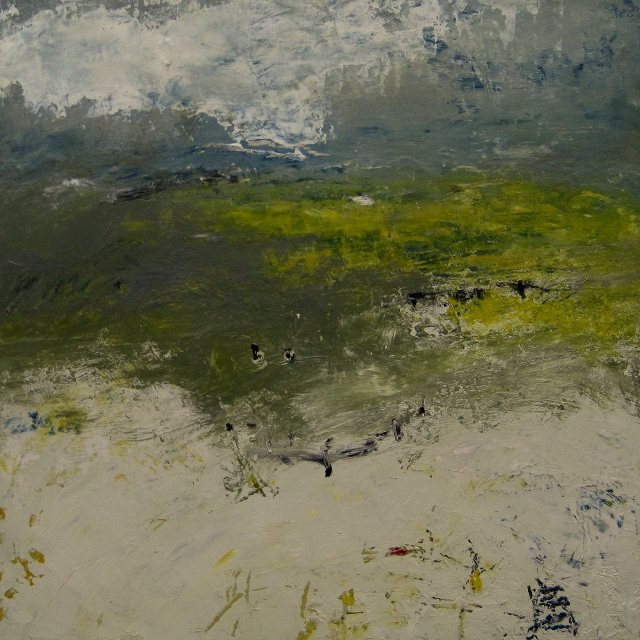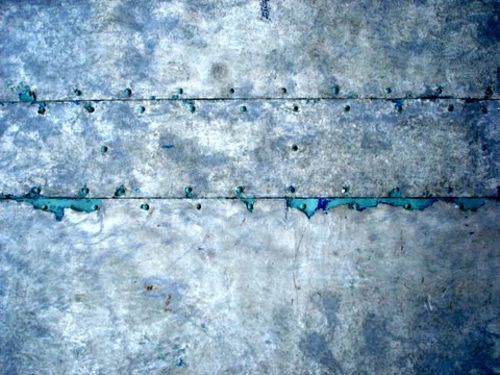Looking at Midge Naylor’s paintings, monoprints and photographs, I’m struck by a sense of Britain’s coastal landscapes, places of wildness, wind, rain and brief glorious moments of sunshine when the light catches on drenched edges and makes them suddenly sublime. Her work offers up shapes and shades that shortcut you to the feel of a place.
“Painting,” she says, “is my preferred medium and I use lots of different materials, reworking by removing or layering until it feels ‘right’. And then there’s colour… that’s why it’s the medium I use most often. The materiality of a painting seems to increase its imaginary potential and feeling of presence.”
The same impressions feed through to her monoprints, a process she came to almost by accident. “I started monoprinting when on an etching course a few years ago,” she explains. “Soon realising that the long process involved in etching didn’t suit the way I like to work, I used the equipment to produce monoprints. Most are really monotypes – I don’t use the plate for more than one print and there’s no going back – probably fewer than one in four is a success.”
Midge’s photographs are equally abstract, capturing details most of us would overlook. “The unexpected and the usually unnoticed attract me, together with fine textures, patterns and colour,” she says. “Editing of photographs is kept to an absolute minimum.”
The way Midge works is enticingly exploratory: “I think of the work as experimental – it refers to landscape but it’s a psychological landscape,” she says. “I’m a studio painter and I draw a lot, but don’t gather material for specific paintings from observational drawing outside. I have no idea what will happen when I start a work and the excitement is in making visual a kind of reverie. ‘Selm Muir’ (at the top of this post) is an example of this. It’s an ‘inscape’ created spontaneously, driven by memory and emotion.”
Many of her pieces don’t have titles or have non-specific ones “because I don’t really like putting ideas about subject matter into the mind of the viewer, particularly in the more abstract works.” It means we’re left to read into the pieces and make sense of them however we wish or are able to, creating an unspoken collusion between artist and audience.
Midge’s landscape piece March 15 #2 (it’s the second she drew on that date) is currently on show in the RWA’s Drawn exhibition. It’s already been sold, so take a look while you can!
Are you an artist or do you know an artist who would like to be showcased on SkyLightRain.com? Get in touch at judydarley (at) iCloud.com. I’m also happy to receive reviews of books, exhibitions, theatre and film. To submit or suggest a review, please send an email to judydarley (at) iCloud.com.


